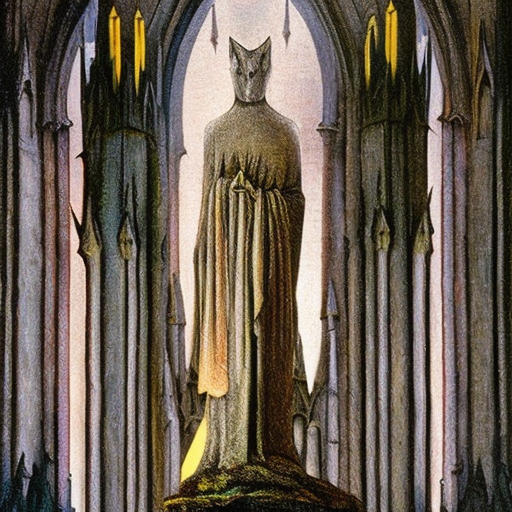Gothic Architecture: A Marvel of Medieval Design
Gothic architecture is a style of architecture that flourished in Europe during the High and Late Middle Ages, from the 12th to the 16th century. It is characterized by its pointed arches, ribbed vaults, and flying buttresses, which allowed for the creation of larger and more intricate buildings. This architectural style originated in France and spread throughout Europe, leaving a lasting impact on the continent’s architectural heritage.
Origins and Characteristics
Gothic architecture emerged as a response to the Romanesque style that dominated Europe in the early Middle Ages. The Gothic style sought to create buildings that were lighter, taller, and more ethereal in appearance. The pointed arch, a defining feature of Gothic architecture, allowed for greater height and stability in the construction of vaulted ceilings. This innovation, combined with the use of ribbed vaults, enabled architects to create soaring, open interiors filled with natural light.
Another key characteristic of Gothic architecture is the flying buttress. These external supports, often adorned with intricate stone carvings, helped to distribute the weight of the building and allowed for the construction of large stained glass windows. These windows, a hallmark of Gothic cathedrals, filled the interiors with a kaleidoscope of colored light, creating a sense of awe and transcendence.
Examples of Gothic Architecture
Some of the most iconic examples of Gothic architecture can be found in France. The Notre-Dame Cathedral in Paris, with its majestic spires and intricate rose windows, is a prime example of the Gothic style. The Chartres Cathedral, known for its stunning stained glass windows and labyrinthine floor plan, is another masterpiece of Gothic architecture.
In England, the Canterbury Cathedral is a notable example of Gothic design. Its soaring nave and intricate stone carvings showcase the grandeur and attention to detail that define the style. The Cologne Cathedral in Germany is another impressive Gothic structure, with its twin spires and intricate facade.
Legacy and Influence
Gothic architecture had a profound influence on subsequent architectural styles and continues to inspire architects to this day. The style’s emphasis on verticality and lightness can be seen in the skyscrapers of the modern era. The pointed arch, a key innovation of Gothic architecture, is still used in contemporary designs.
The Gothic style also had a significant impact on other art forms. The intricate stone carvings and stained glass windows of Gothic cathedrals inspired painters and sculptors, who sought to capture the ethereal beauty of these architectural wonders. Gothic literature, with its emphasis on mystery and the supernatural, also drew inspiration from the dark, atmospheric interiors of Gothic cathedrals.
Conclusion
Gothic architecture is a testament to the ingenuity and creativity of medieval architects. Its soaring spires, intricate stone carvings, and luminous stained glass windows continue to captivate and inspire visitors to this day. The style’s emphasis on height, light, and intricate detail set it apart from earlier architectural styles and left an indelible mark on Europe’s architectural landscape. From the grand cathedrals of France to the humble parish churches of England, Gothic architecture remains a testament to the enduring power of human creativity and the pursuit of beauty.












